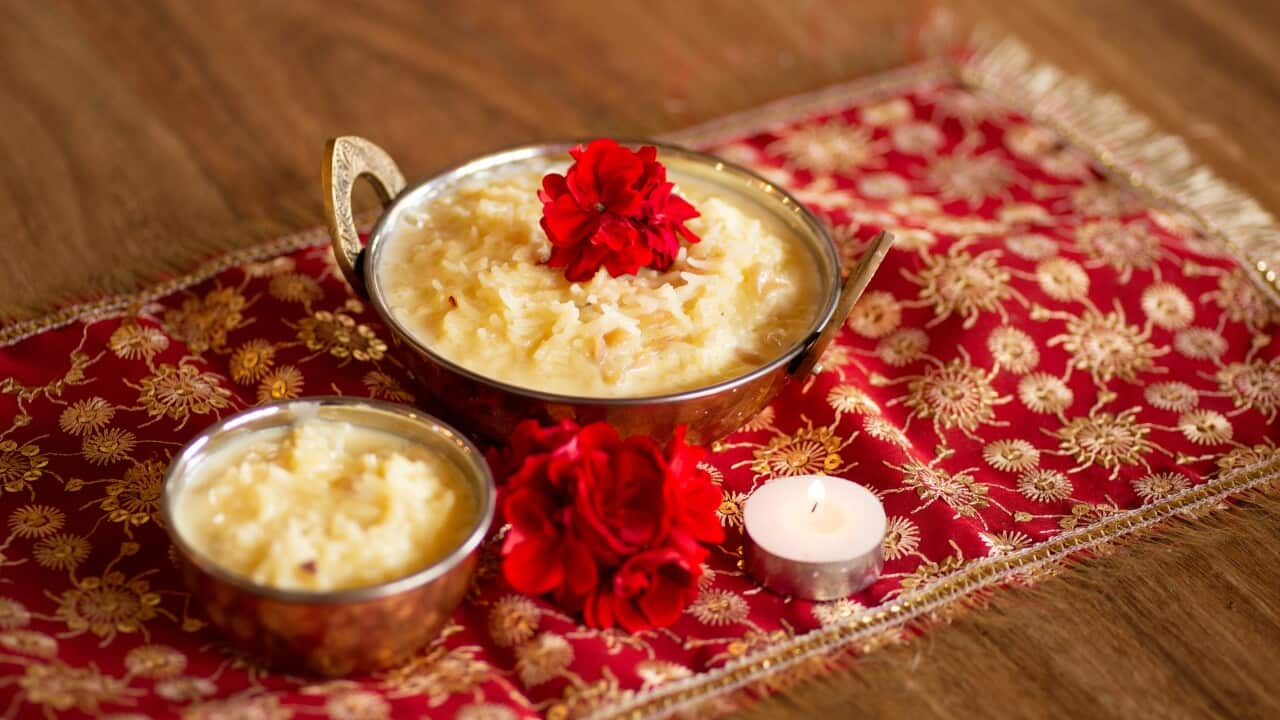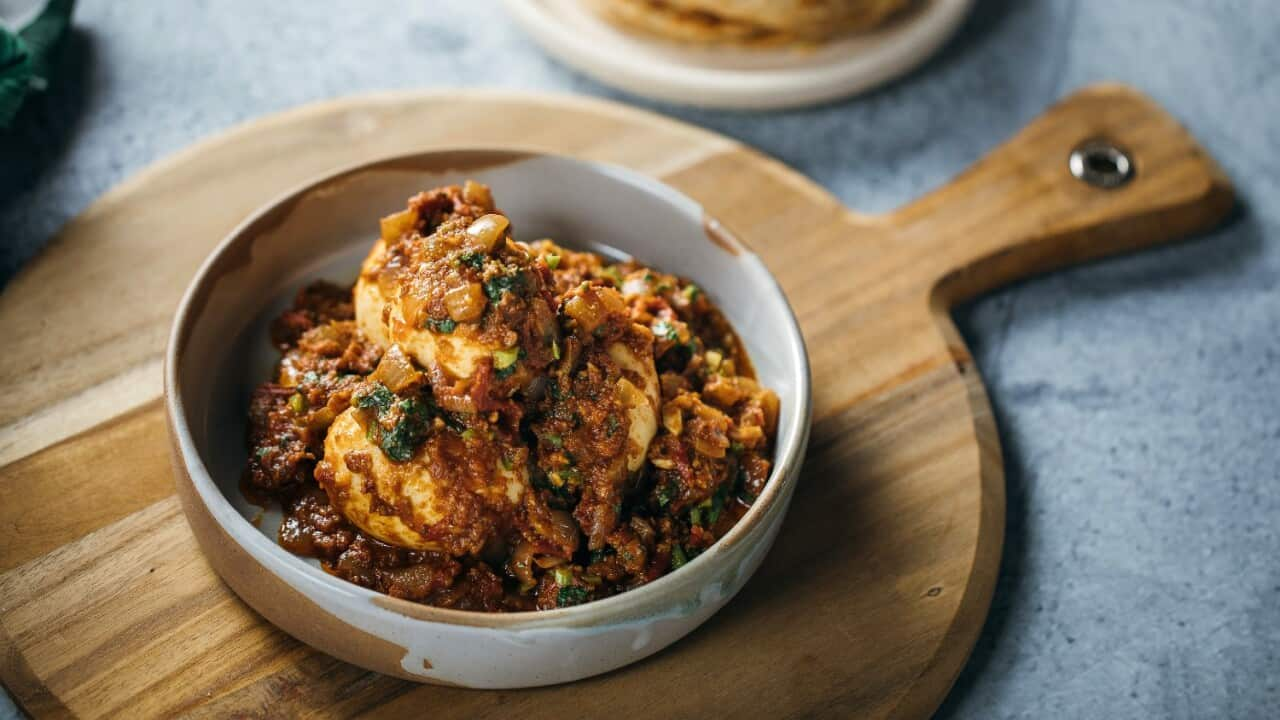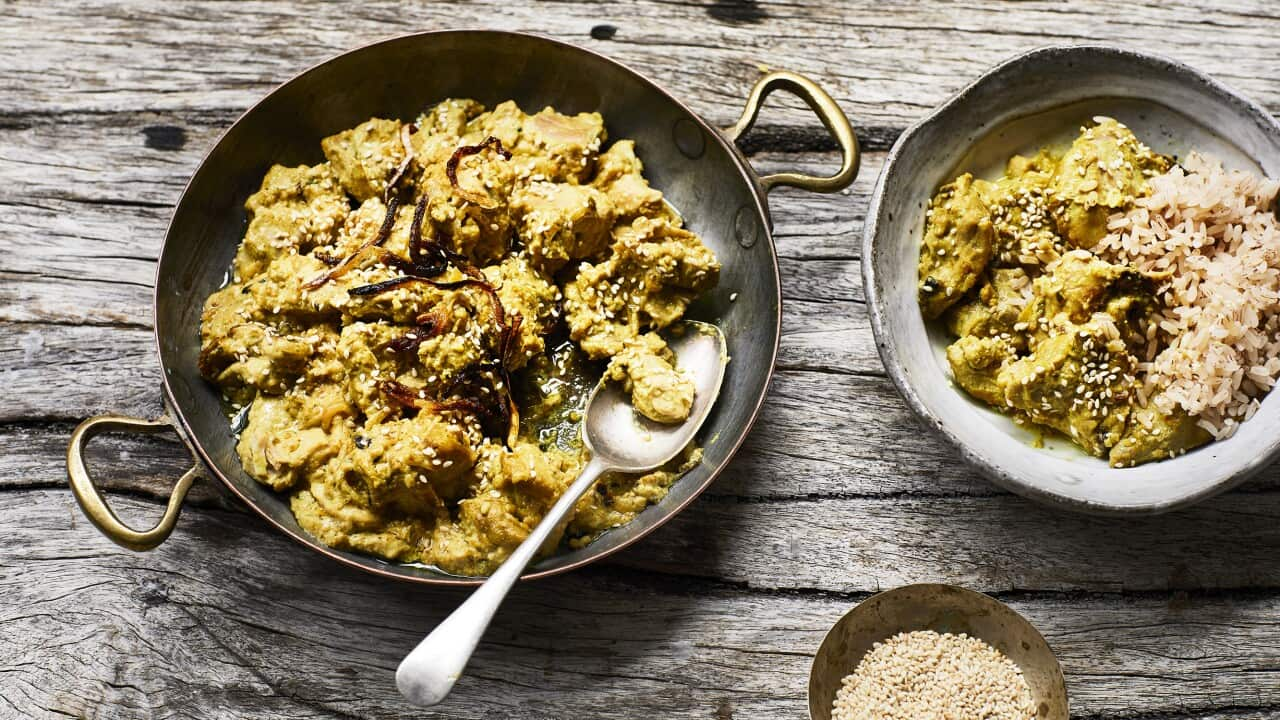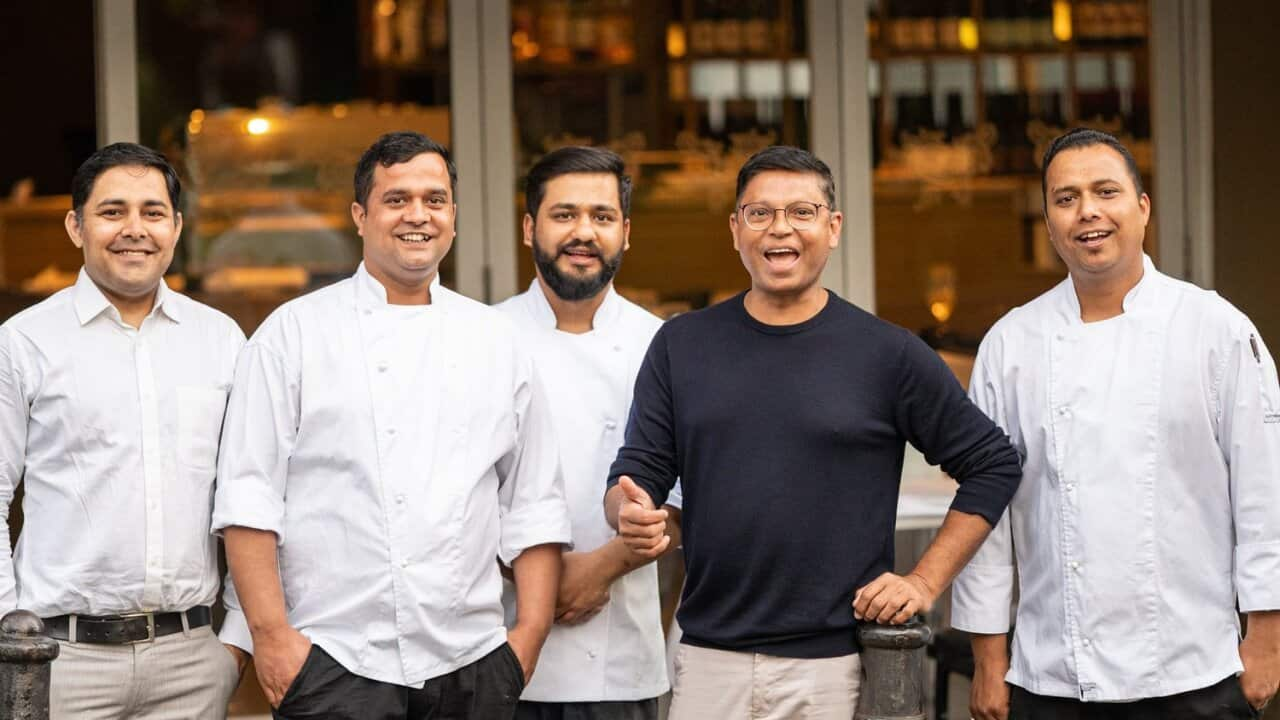In her new book Curry: Recipes from Home Indian Kitchens, Mumbai-raised chef and food writer Maunika Gowardhan celebrates recipes collected during her various travels across India. In this extract, she muses on how the word "curry" is used across the world, and how the many dishes it encompasses reflect heritage and identity.
When we think of Indian curries, we think of warming spices, aromas and complex flavours; scooping up gravy with soft chapattis or pouring it over a mountain of rice served with papad. For me, eating Indian food is all about the combination of taste, texture and accompaniments that bring the meal together. This is what keeps us coming back for more.
The word ‘curry’ in essence refers to a gravy or semi-dry dish cooked with spices that is eaten with flatbreads or rice. I know purists in the past have said that Indians don’t use the word curry, or that it’s a generalisation, but it has been used in many ways across the country. It is true that, historically, the word came from the British, who themselves had picked it up from the Portuguese caril, which was in turn adapted from the south Indian karil, a word that describes a dish made with spices, sautéed meat and vegetables. The spice trade was part of what had drawn these Europeans east and, during the time of the British Raj, traditional dishes evolved to suit the Western palate, which then made their way to curry houses all over Britain.
But closer to home, India evolved too – not only through invasion, migration and political unrest but also our traditions, religion, rituals, caste and festivals that were deep-rooted in ancient civilisations.
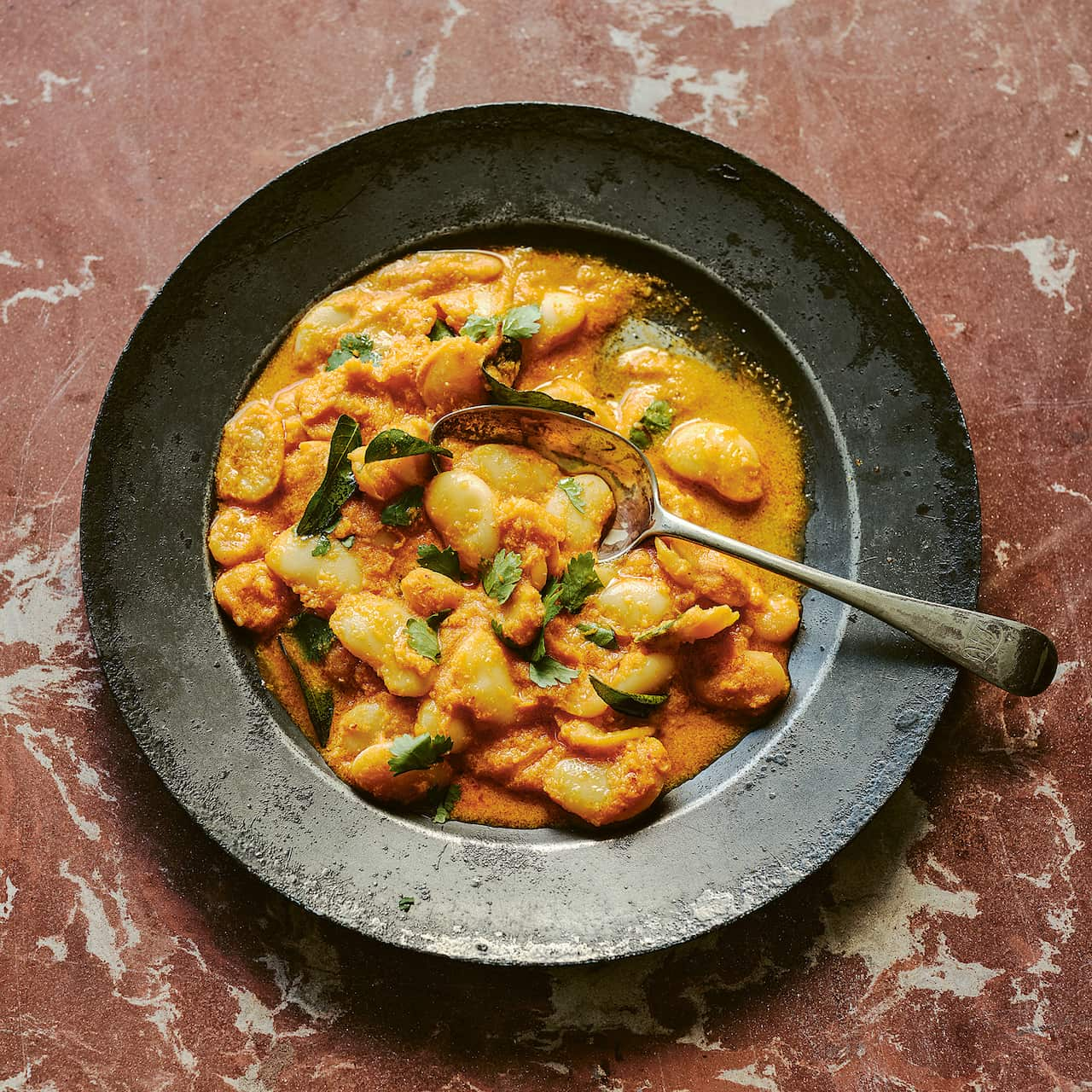
Goan avre bendi (butter bean curry). Credit: Quadrille / Haarala Hamilton
I come from a family that has roots largely in the Konkan and western coastal regions sprawled around the Deccan Plateau. The soul food for most families from the west of India is what we know as ‘fish curry rice’. This is a term locals use to describe a spicy, creamy, hearty fish curry poured over plain rice and eaten with crispy fried fish or prawns (shrimp) on the side. Fish curry rice is a rite of passage and integral part of Maharashtrian heritage and has been my go-to comfort dish ever since I was a young girl living in Mumbai. There was never a week that went by that my mum didn’t cook it, using freshly caught pomfret from the fish market that she marinated in masala and simmered in a fresh coconut gravy. It’s also something I have passed on to my family in the UK. When I use the word ‘curry’ in this context, it reminds me of home.
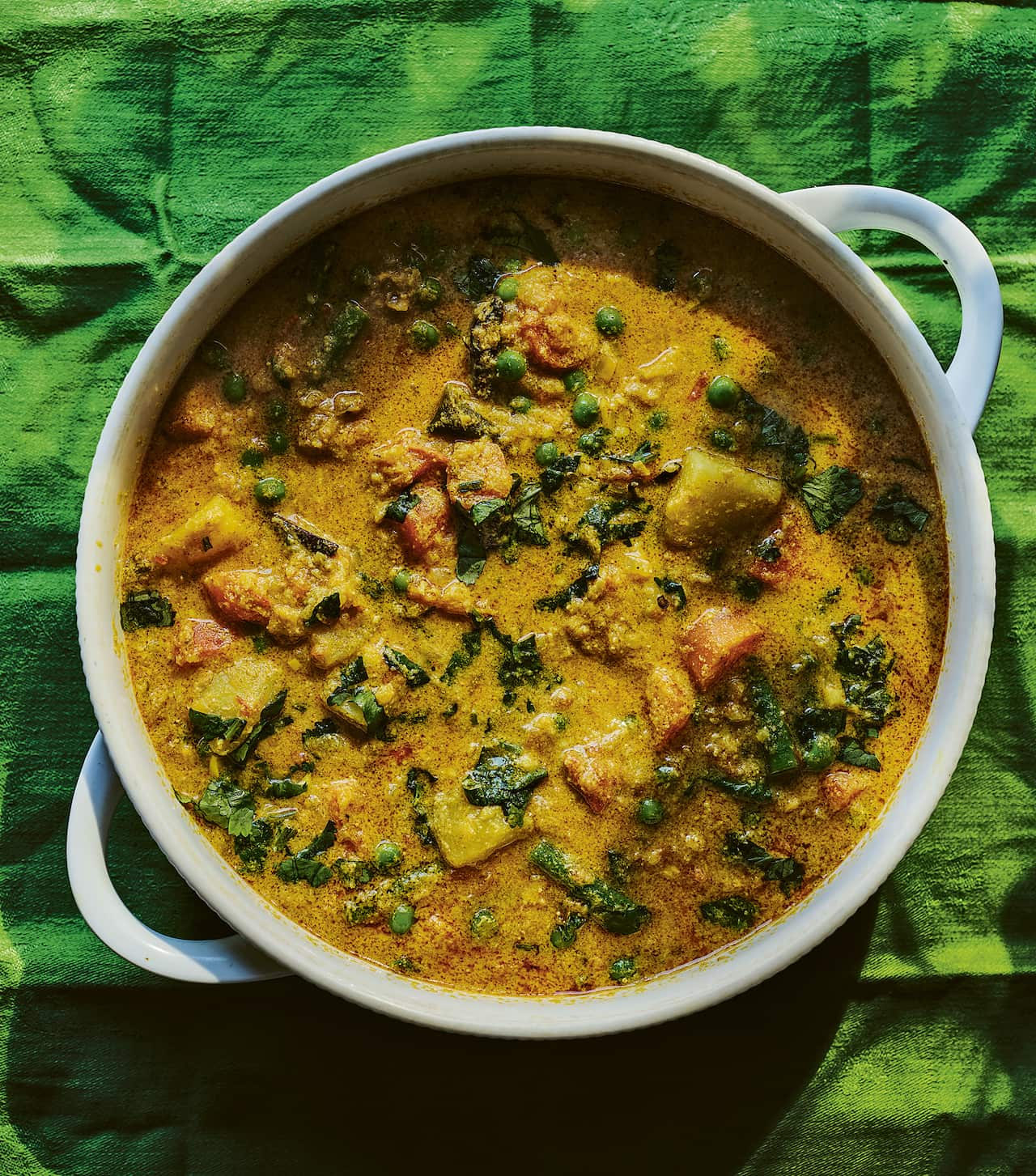
Puducherry vegetable kurma. Credit: Quadrille / Haarala Hamilton
There have been many times my Muslim friends have insisted I try their ammi’s (mum’s) mutton curry, too (a huge compliment that implies it’s truly the best). This demonstrates that ‘curry’ is used in conversation in India. The differentiation perhaps comes from the fact that, as Indians, we are also always aware of the individual names for dishes and are able to identify them in the local language, for example Bengali aloo posto, murgh makhani or Banarasi matar ka nimona. This is not only an easier way to identify the dish but also the region and community it hails from. It’s about identity, and food has always been a huge part of that. Ask the young girl who moved to the UK on a cold September day and recreated her mum’s fish curry while surrounded by unpacked boxes, standing in the kitchen to eat it straight from the pan. You know that moment felt like home.
So, as much as the word curry has been generalised, it has also been popularised and is part of one of the most accomplished cuisines on the global stage. Curries showcase the variety and diversity of India, its heritage and culture.
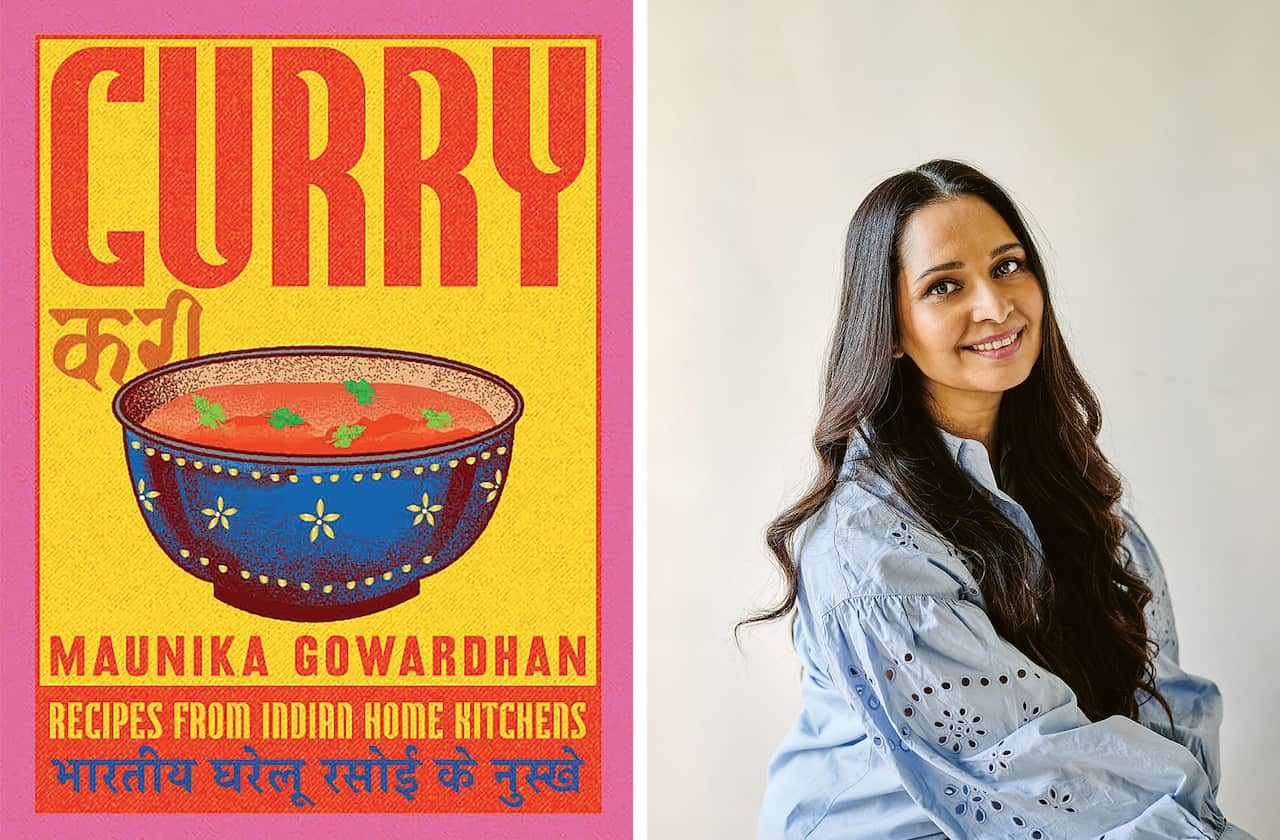
Maunika Gowardhan and her newly released book, Curry. Credit: Quadrille
MORE FROM MAUNIKA GOWARDHAN
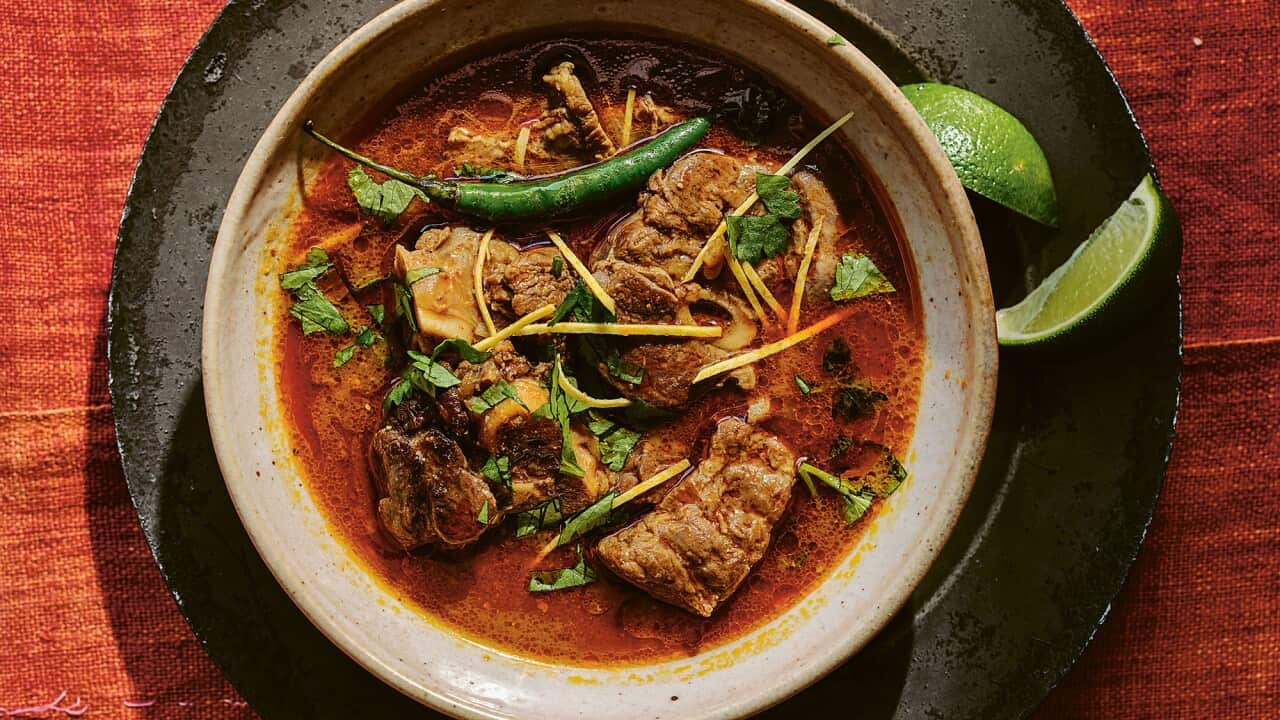
Lucknowi lamb nihari (lamb stew with ginger, nutmeg and chilli)
Share
SBS Food is a 24/7 foodie channel for all Australians, with a focus on simple, authentic and everyday food inspiration from cultures everywhere. NSW stream only. Read more about SBS Food

